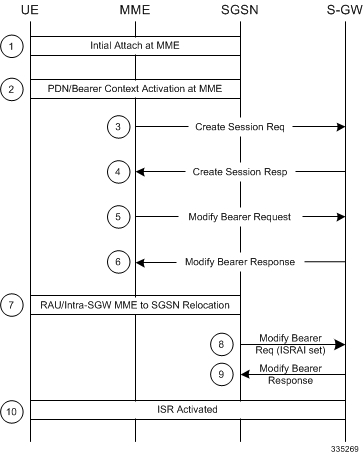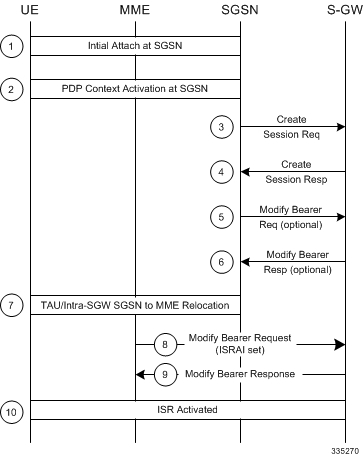Feature Description
Idle mode Signaling Reduction (ISR) allows the UE to be registered in UTRAN/GERAN at the same time it is registered in E-UTRAN. ISR requires functionality in both the UE and the network (i.e. in the SGSN, MME, S-GW and HSS) to activate ISR for a UE. The network can decide for ISR activation individually for each UE.
ISR allows the UE to roam between LTE & 2G/3G while reducing the frequency of TAU and RAU procedures caused by UEs reselecting between E-UTRAN and GERAN/UTRAN, when operated together. It not only reduces the signaling between UE and network, but also reduces the signaling between E-UTRAN & UTRAN/GERAN.
When ISR is activated, the UE is registered with both the MME and S4 SGSN. Both the S4 SGSN and the MME have a control connection with the S-GW. The MME and S4 SGSN are both registered at the HSS. The UE stores MM parameters from S4 SGSN (e.g. P-TMSI and RA) and from MME (e.g. GUTI and TA(s)) and the UE stores session management (bearer) contexts that are common for E-UTRAN and GERAN/UTRAN accesses. In an idle state the UE can reselect between E-UTRAN and GERAN/UTRAN (within the registered RA and TAs) without any need to perform TAU or RAU procedures with the network. SGSN and MME store each other's address when ISR is activated.


 Feedback
Feedback